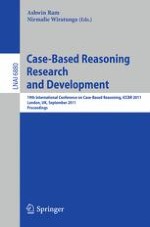This book constitutes the refereed proceedings of the 19th International Conference on Case-Based Reasoning, held in London, UK, in September 2011.
The 32 contributions presented together with 3 invited talks were carefully reviewd and selected from 67 submissions. The presentations and posters covered a wide range of CBR topics of interest both to practitioners and researchers, including CBR methodology covering case representation, similarity, retrieval, and adaptation; provenance and maintenance; recommender systems; multi-agent collaborative systems; data mining; time series analysis; Web applications; knowledge management; legal reasoning; healthcare systems and planning systems.
